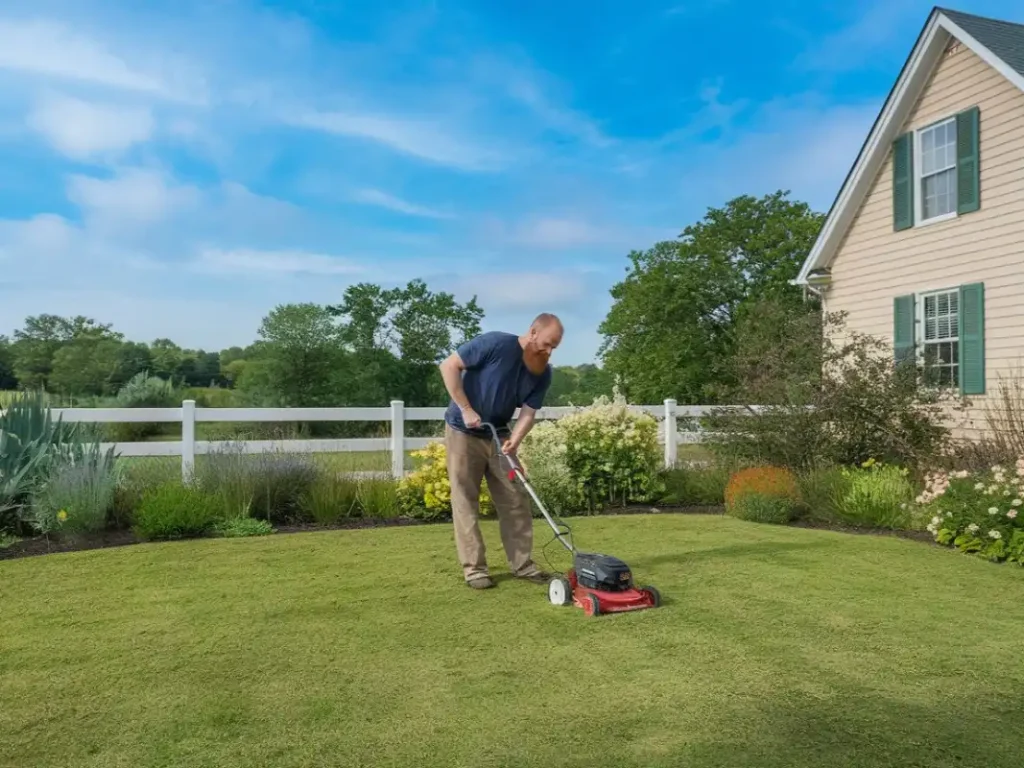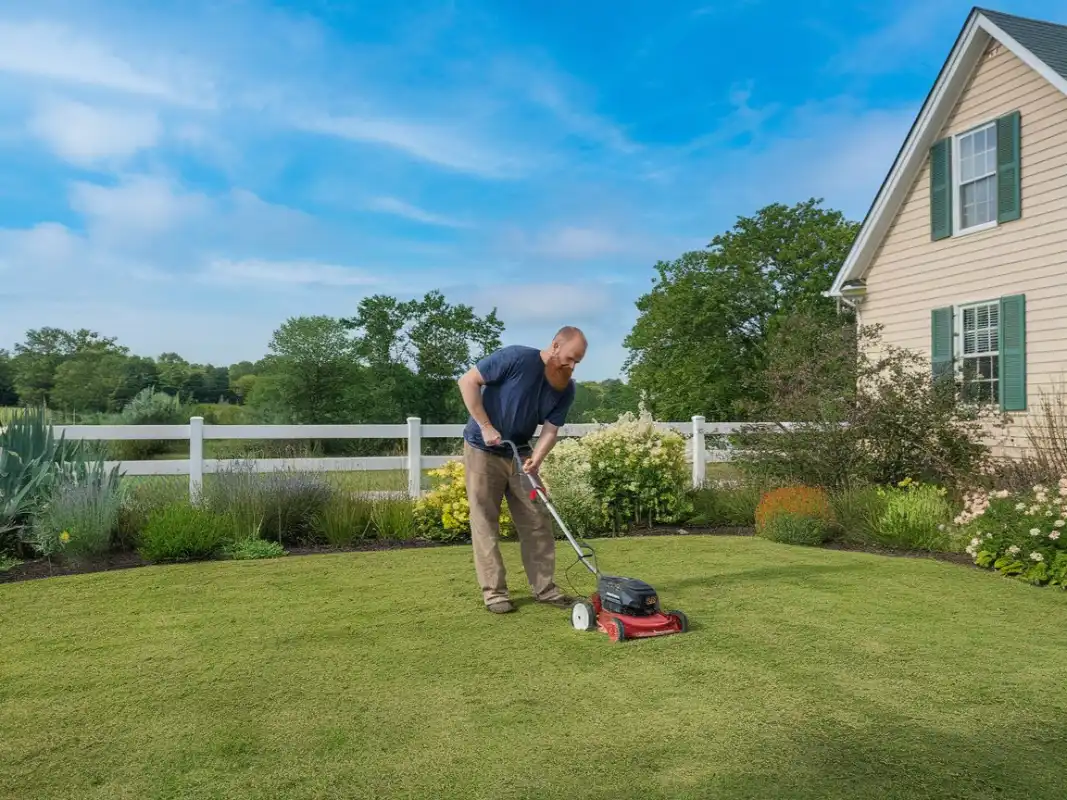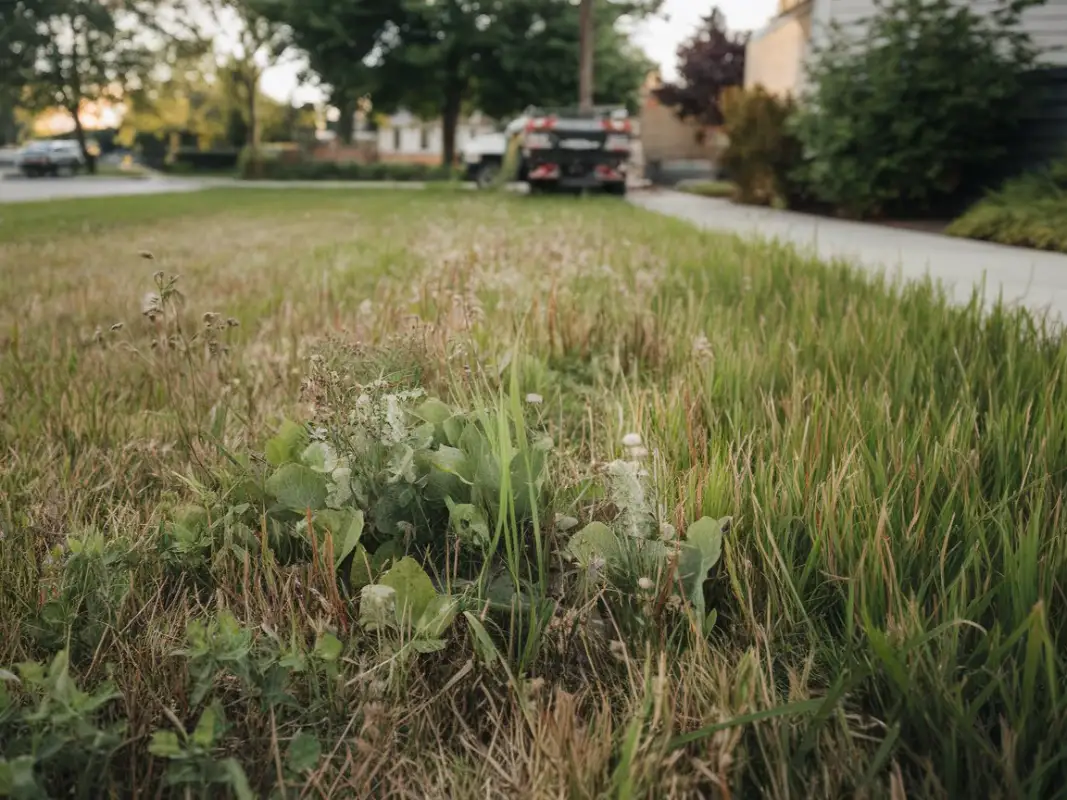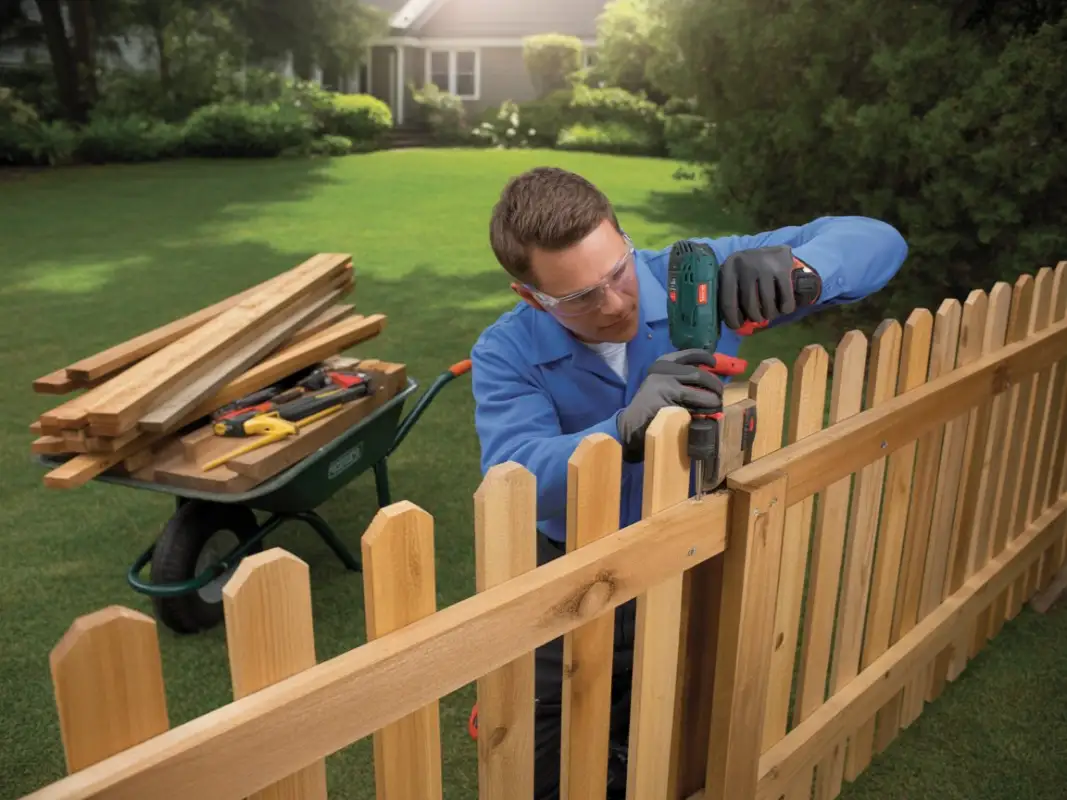The Truth About Lawn Care Mistakes
You’d be surprised how many homeowners unknowingly sabotage their lawns, even with good intentions. Maybe you water too much, cut too short, or fertilize at the wrong time. The result? Patchy, yellow, weed-ridden grass that never quite looks like the neighbor’s perfect yard.
At Lawn Theory, we’ve seen it all from overzealous watering schedules in Fairfax to dull mower blades tearing through lawns in Loudoun County. The good news? Most of these lawn care mistakes are easy to fix once you understand why they happen.
Whether you’re tackling your first spring clean-up or fine-tuning a lush landscape in Arlington, Alexandria, Prince William, or Falls Church, this guide will help you avoid the most common pitfalls and keep your grass healthy, strong, and picture-perfect.
Why Most Homeowners Make Lawn Care Mistakes
Let’s face it lawns don’t come with a manual. What works for your neighbor’s turf might completely backfire on yours, especially in Northern Virginia’s tricky clay-based soil and humid weather.
Between unpredictable rain, compacted soil, and tough cool-season grasses like tall fescue and bluegrass, it’s easy to misjudge what your yard really needs.
Most people rely on guesswork watering when it “looks dry,” cutting when they “have time,” or tossing down whatever fertilizer was on sale. But great lawns are built on timing, precision, and consistency. That’s where understanding common mistakes pays off.
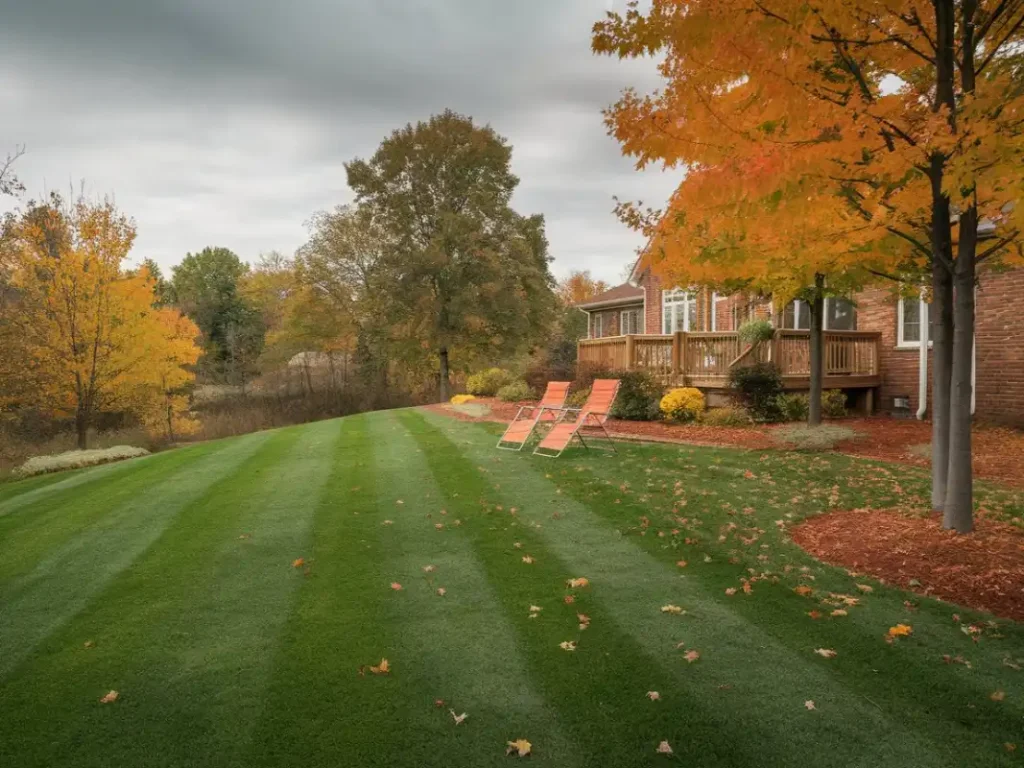
Top 10 Lawn Care Mistakes Homeowners Make (and How to Fix Them)
1. Overwatering or Not Watering Enough
It’s the #1 lawn care mistake we see across Fairfax and Loudoun watering too often or too little.
Your grass only needs about 1 inch of water per week, including rainfall. Overwatering leads to fungus, shallow roots, and wasted water, while underwatering makes your lawn brittle and brown.
Lawn Theory Tip:
Water deeply but infrequently early morning is best. For most Northern Virginia lawns, two deep watering sessions per week are plenty.
2. Cutting Grass Too Short
We get it short grass looks neat. But cutting more than one-third of the blade height stresses your grass and exposes soil to sunlight, which invites weeds.
Lawn Theory Tip:
Keep cool-season grasses like tall fescue around 3 to 3.5 inches high. Taller blades mean stronger roots and fewer weeds.
3. Skipping Aeration and Overseeding
Compacted soil is a silent lawn killer. Without proper aeration, air, water, and nutrients can’t reach the roots. Skipping this step means your grass suffocates slowly and weeds take over fast.
Lawn Theory Tip:
Aerate and overseed your lawn every fall to keep it dense and resilient. We do this routinely for clients in Prince William and Arlington, where soil compaction is common.
4. Using the Wrong Fertilizer
Fertilizer isn’t one-size-fits-all. Using too much nitrogen or applying it at the wrong time can burn your lawn and damage the root system.
Lawn Theory Tip:
In Northern Virginia, feed your lawn in early spring and late fall with a slow-release fertilizer high in nitrogen and low in phosphorus. Always follow the recommended rates more isn’t better.
Also Read: Lawn Care Pre-Emergent Weed Control in Northern Virginia | Lawn Theory
5. Ignoring Soil pH and Testing
Most homeowners skip soil testing altogether, but it’s the foundation of good lawn care. Northern Virginia’s soils tend to lean acidic, which locks out essential nutrients.
Lawn Theory Tip:
Test your soil every 2–3 years. The ideal pH for cool-season grasses is 6.0–6.8. Apply lime as needed to balance acidity and maximize nutrient absorption.
6. Neglecting Weed Management
Weeds don’t take a break even when your lawn looks great. Waiting until spring to tackle weeds gives them months to spread under the radar.
Lawn Theory Tip:
Use a pre-emergent herbicide in early spring to prevent crabgrass and a selective post-emergent in fall for broadleaf weeds. Better yet, keep your grass thick through overseeding to crowd weeds out naturally.
7. Forgetting to Rake Leaves Early
Those colorful fall leaves may look pretty, but when left on your lawn, they block sunlight and trap moisture, creating disease-friendly conditions.
Lawn Theory Tip:
Rake or mulch leaves weekly during fall. A thin layer of chopped leaves can feed your soil — but piles can suffocate it.
8. Using Dull Mower Blades
Dull mower blades tear grass instead of cutting it cleanly, leaving frayed edges that brown and attract disease. This mistake is subtle but damaging over time.
Lawn Theory Tip:
Sharpen mower blades every 20–25 hours of use. Your grass will thank you with a smoother, greener look.
9. Forgetting Seasonal Transitions
Many homeowners treat summer and fall the same big mistake. Each season demands a different care approach.
Lawn Theory Tip:
In spring and summer, focus on mowing and watering.
In fall, prioritize aeration, fertilization, and seeding.
In winter, avoid heavy foot traffic on dormant grass to prevent damage.
10. Doing Nothing (The Biggest Mistake of All)
We get it between busy schedules and changing weather, lawn care often slips to the bottom of the list. But neglecting it now only means more headaches (and expenses) later.
Lawn Theory Tip:
Even basic steps mowing regularly, light watering, and one fall fertilizer can keep your lawn alive until you’re ready for full maintenance. For best results, schedule seasonal checkups with Lawn Theory’s local lawn experts.
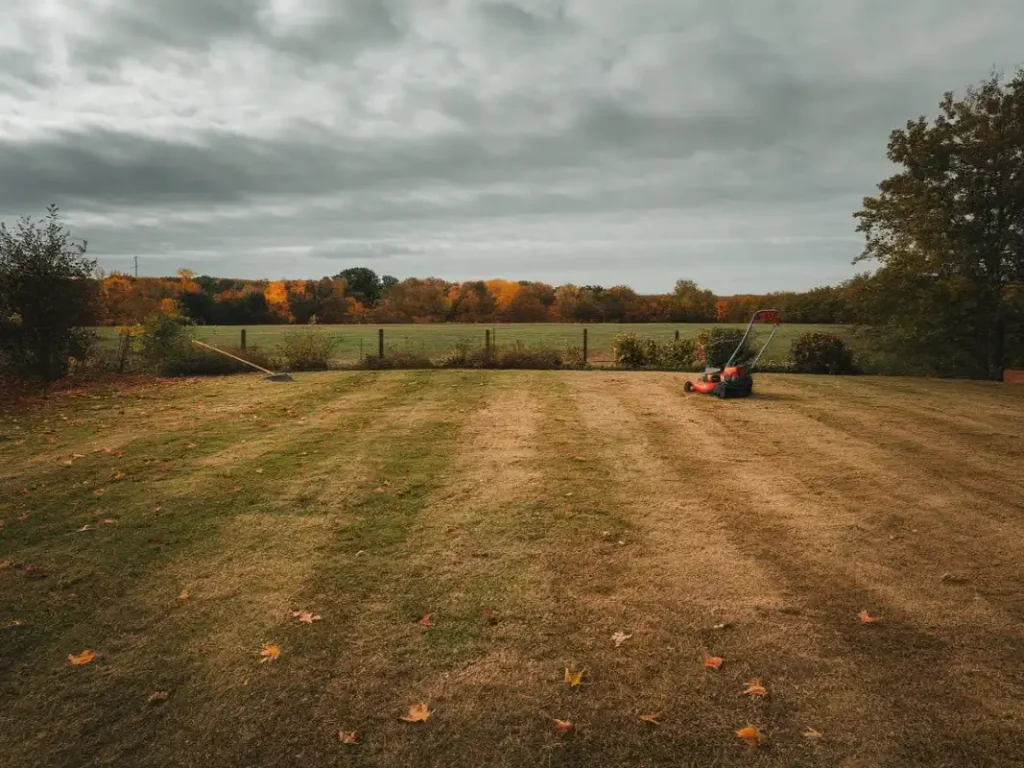
Why These Mistakes Hurt Northern Virginia Lawns Most
Here’s the thing: Northern Virginia lawns are different. Our unique mix of humidity, clay soil, and cool-season grasses requires a balance that generic online advice just doesn’t address.
In Fairfax, clay soil retains water making overwatering and compaction more likely.
In Loudoun and Prince William, lawns on slopes need erosion-control seeding.
In Arlington and Alexandria, smaller urban lawns benefit from precision care, not guesswork.
That’s why Lawn Theory’s local expertise matters we design maintenance schedules that fit your neighborhood, soil type, and lawn goals perfectly.
How to Fix Common Lawn Care Mistakes – Lawn Theory’s Proven Method
Step 1: Diagnose Before You Dig
Start with a professional soil test and lawn assessment. This reveals pH, compaction, nutrient balance, and weed activity — the foundation of all corrections.
Step 2: Refresh the Roots
Aerate, dethatch, and overseed in early fall. Follow up with balanced fertilization to stimulate new growth.
Step 3: Water with Intention
Set up consistent irrigation, not random watering. We help clients program smart systems that adjust with rainfall — a game changer for Virginia lawns.
Step 4: Feed and Protect
Use slow-release fertilizers twice a year. Combine with targeted pre- and post-emergent weed control for healthy, uniform turf.
Step 5: Maintain Like a Pro
Mow weekly, sharpen blades monthly, and mulch clippings to return nutrients to your soil.
At Lawn Theory, this system has turned hundreds of struggling lawns across Fairfax, Loudoun, and Arlington into lush, golf-course-level greens — without guesswork or waste.
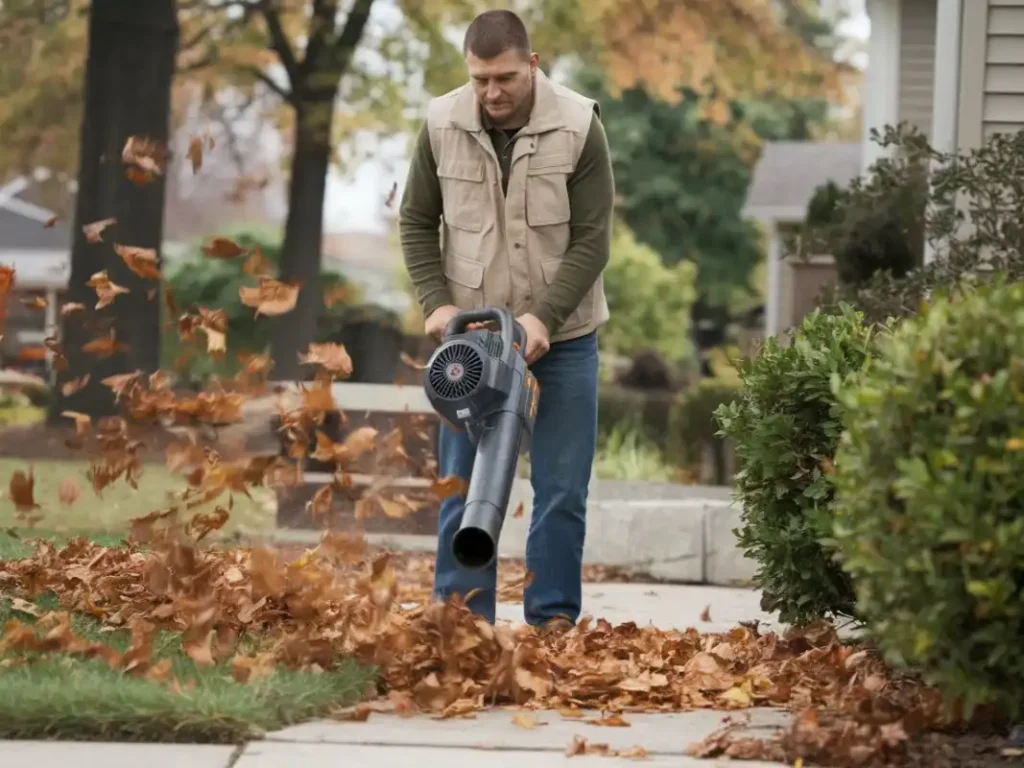
Lawn Theory’s Pro Tips for Year-Round Lawn Perfection
| Season | Focus | Pro Tip from Lawn Theory |
|---|---|---|
| Spring | Fertilize & weed control | Apply pre-emergent before soil hits 55°F |
| Summer | Mow high, water deeply | Cut at 3.5″ to protect roots from heat |
| Fall | Aerate & overseed | The best time to thicken your lawn |
| Winter | Protect dormant grass | Avoid heavy traffic and clear debris |
Our clients across Alexandria and Falls Church swear by this seasonal rhythm, it keeps lawns green, resilient, and ready for anything Virginia weather throws their way.
FAQs About Lawn Care Mistakes
Q1: What’s the biggest lawn care mistake homeowners make?
Ignoring soil health. Without proper aeration and testing, even perfect watering and mowing can fail.
Q2: How often should I fertilize my lawn in Northern Virginia?
Twice a year – early spring and late fall with a slow-release nitrogen blend suited to our climate.
Q3: How short should I mow my lawn?
Never cut more than one-third of the blade. For tall fescue, aim for 3–3.5 inches.
Q4: When should I aerate my lawn?
Fall is ideal for cool-season grasses. It relieves compaction and prepares soil for seeding.
Q5: Can I fix a patchy or yellow lawn myself?
Yes, start with soil testing, adjust watering, and overseed. Or call Lawn Theory for a professional rescue plan.
Avoid These Mistakes – Let Lawn Theory Handle the Hard Work
Your lawn deserves better than trial-and-error. Whether you’re in Fairfax, Loudoun, Arlington, Alexandria, Prince William, or Falls Church, Lawn Theory is your trusted partner for smarter, greener, more resilient lawns. See us on Instagram.
Our veteran-owned team specializes in local soil recovery, weed management, fertilization, aeration, and year-round maintenance designed for Virginia’s climate — not generic national advice.
📞 Call (703) 650-5655 or request your free lawn care consultation, and let us help you avoid every costly mistake before it happens.
Don’t wait until the next season to fix what’s avoidable today.

